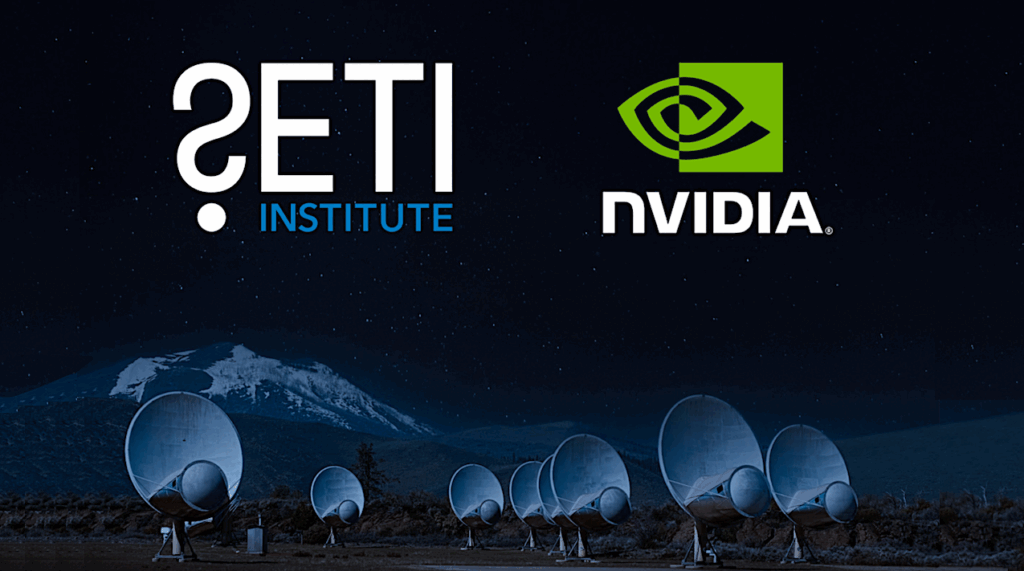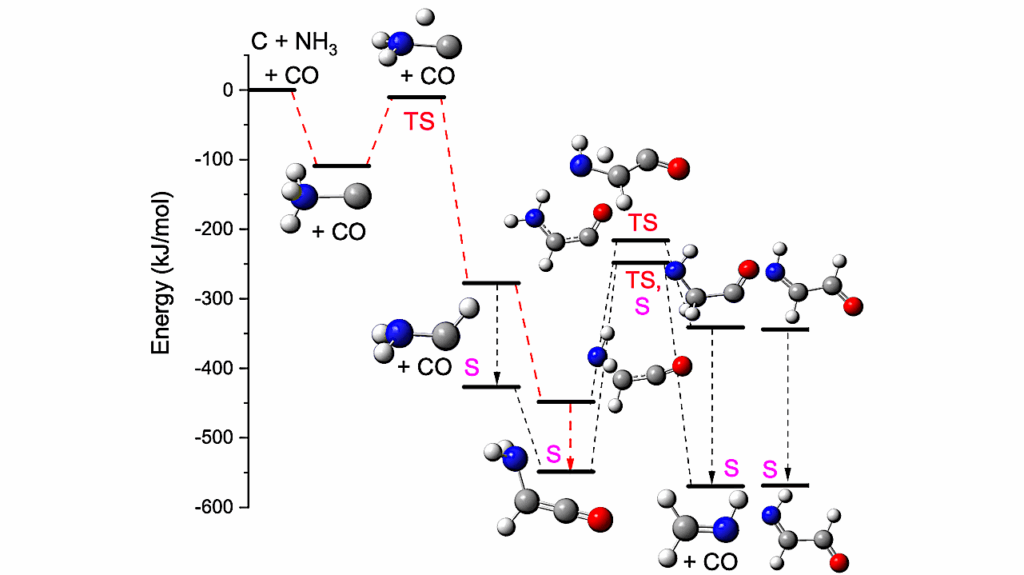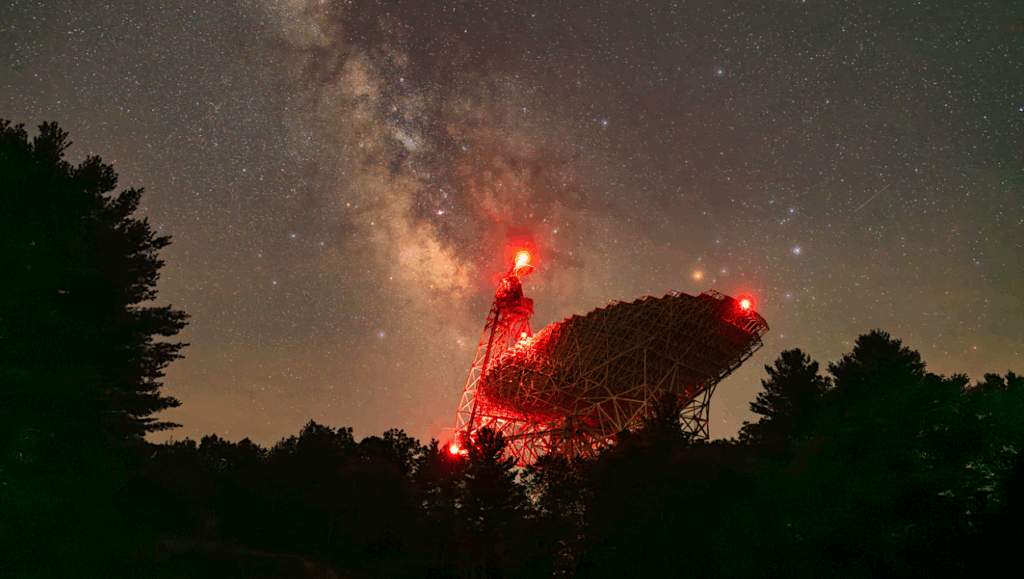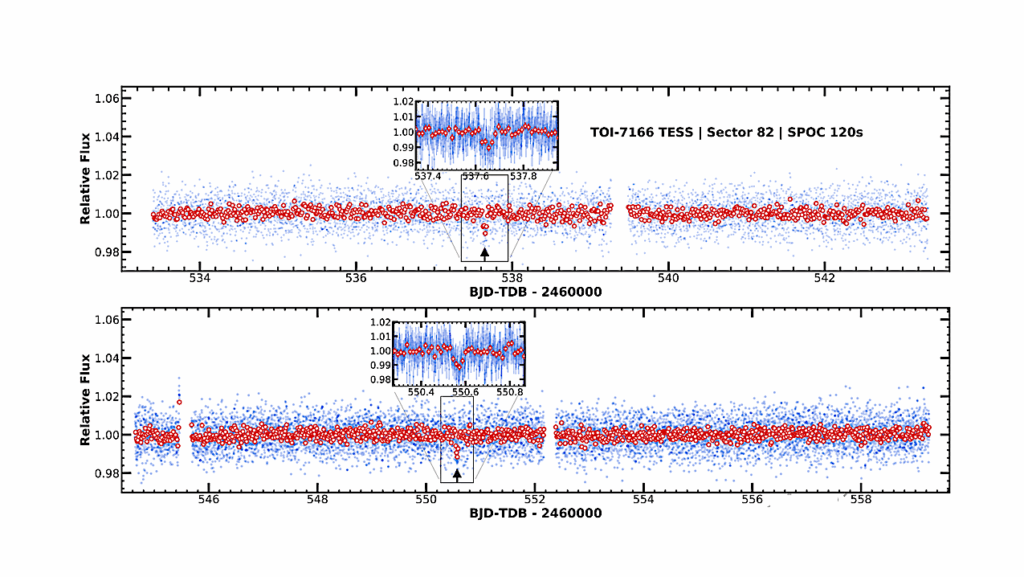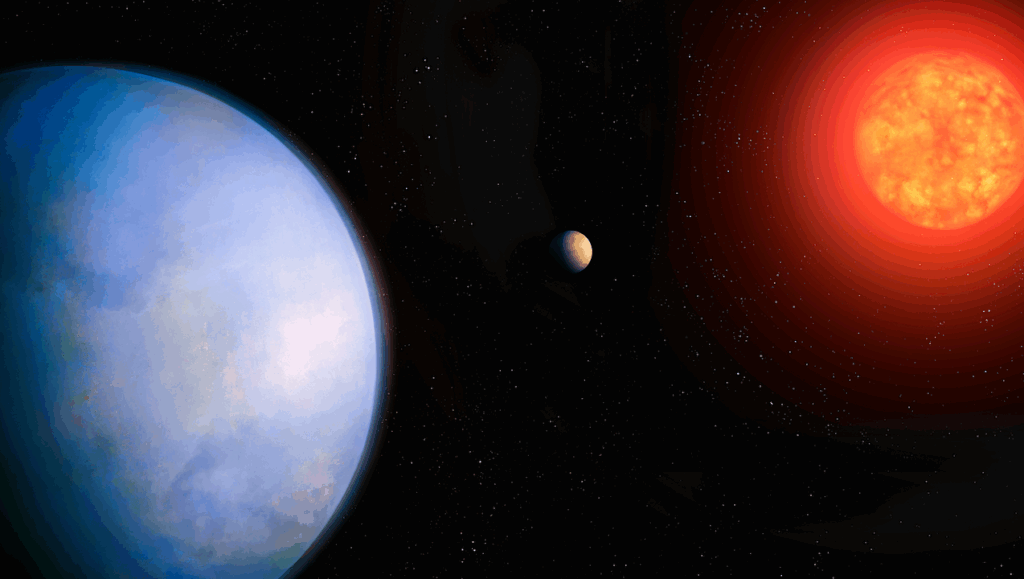The Habitable-zone Planet Finder Reveals A High Mass and a Low Obliquity for the Young Neptune K2-25b

Using radial-velocity data from the Habitable-zone Planet Finder, we have measured the mass of the Neptune-sized planet K2-25b, as well as the obliquity of its M4.5-dwarf host star in the 600-800MYr Hyades cluster.
This is one of the youngest planetary systems for which both of these quantities have been measured, and one of the very few M dwarfs with a measured obliquity. Based on a joint analysis of the radial velocity data, time-series photometry from the K2 mission, and new transit light curves obtained with diffuser-assisted photometry, the planet’s radius and mass are 3.44±0.12R⊕ and 24.5+5.7−5.2M⊕. These properties are compatible with a rocky core enshrouded by a thin hydrogen-helium atmosphere (5% by mass). We measure an orbital eccentricity of e=0.43±0.05. The sky-projected stellar obliquity is λ=3±16∘, compatible with spin-orbit alignment, in contrast to other “hot Neptunes” that have been studied around older stars.
Gudmundur Stefansson, Suvrath Mahadevan, Marissa Maney, Joe P. Ninan, Paul Robertson, Jayadev Rajagopal, Flynn Haase, Lori Allen, Eric B. Ford, Joshua Winn, Angie Wolfgang, Rebekah I. Dawson, John Wisniewski, Chad F. Bender, Caleb Cañas, William Cochran, Scott A. Diddams, Connor Fredrick, Samuel Halverson, Fred Hearty, Leslie Hebb, Shubham Kanodia, Eric Levi, Andrew J. Metcalf, Andrew Monson, Lawrence Ramsey, Arpita Roy, Christian Schwab, Ryan Terrien, Jason T. Wright
Comments: Accepted for publication in AJ, 31 pages, 14 figures
Subjects: Earth and Planetary Astrophysics (astro-ph.EP)
Cite as: arXiv:2007.12766 [astro-ph.EP] (or arXiv:2007.12766v1 [astro-ph.EP] for this version)
Submission history
From: Gudmundur Stefansson
[v1] Fri, 24 Jul 2020 21:00:25 UTC (3,501 KB)
https://arxiv.org/abs/2007.12766
Astrobiology


